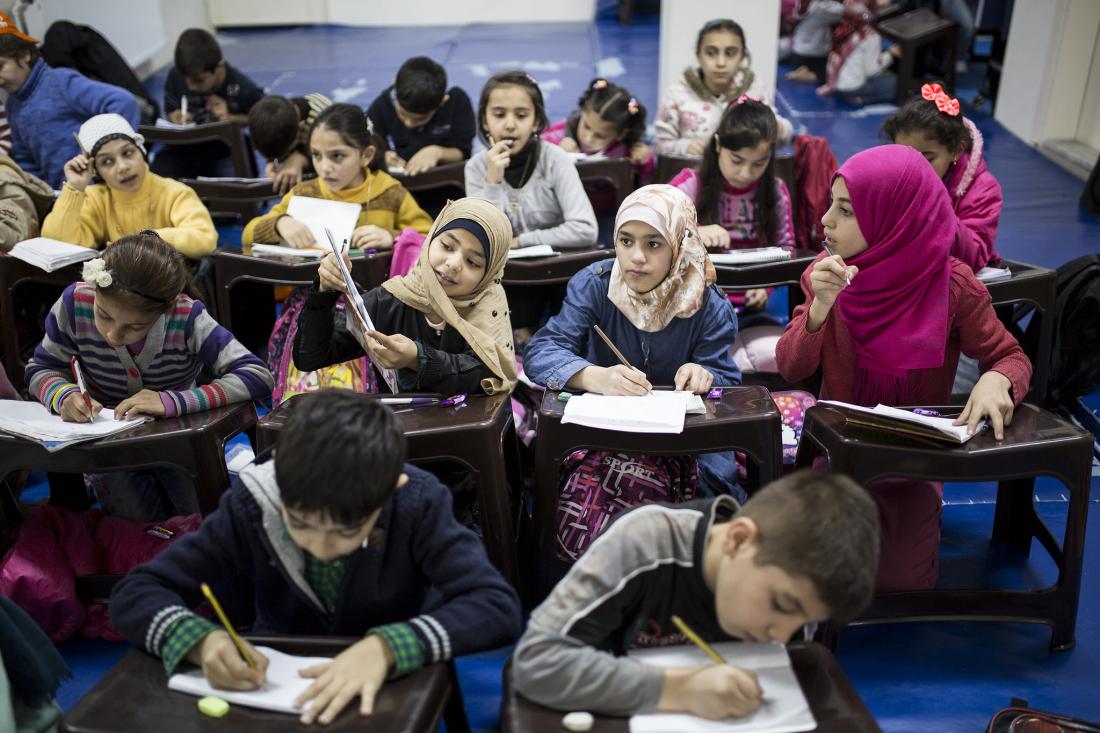Teachers' traditional beliefs about gender negatively impact the academic performance of girls in Turkey
- Children
- Primary schools
- Students
- Teachers
- Women and girls
- Student learning
- Attitudes and norms
- Norms change
- Student motivation
Gender inequalities in academic achievement, choice of occupation, and labor market outcomes are present throughout the world. To better understand how these disparities emerge, researchers studied the effect of teachers’ beliefs about gender roles on student achievement in Istanbul, Turkey. Girls who were taught by teachers with traditional gender views had lower math and verbal test scores, which worsened with longer exposure to their teachers. Boys, on the other hand, did not experience these effects.
Policy issue
Gender stereotypes contribute to society’s expectations about individuals and can influence people’s choices and circumstances, as well as the roles they assume in society. Children develop their beliefs about gender based on the major influences in their lives, including their teachers. Teachers may communicate their views about gender to their students or reflect these beliefs through differential treatment of boys and girls. These teacher practices can influence students’ aspirations, interests, and academic performance. Previous studies have examined gender-based biases in grading and the effect of having female or male teachers on both boys and girls. This study differs from previous research by directly measuring teachers’ beliefs, varying the years students spend with their teachers, and accounting for teaching style and quality. How do teachers’ beliefs about gender influence students’ achievement and beliefs?
Context of the evaluation
The evaluation took place in 31 elementary schools in low-income areas of Istanbul, Turkey and included approximately 4,000 third and fourth grade students and their 145 teachers. In this context, public school teachers do not select the schools where they teach but rather the Ministry of Education places them where there is need. Teachers are generally unable to make changes due to the oversupply of teachers. Meanwhile, students are randomly assigned to their first grade teacher and usually remain with the same teacher for all of elementary school.

Details of the intervention
To measure the impact of teachers’ gender views on students’ beliefs and academic performance, researchers used the fact that teachers did not choose their school, and that administrators randomly assigned students to their teacher, to simulate a randomized evaluation. In this way, students essentially had a randomized degree of exposure to teachers with either more or less traditional gender views.
To measure teachers’ gender stereotypes, researchers administered a questionnaire that asked teachers the extent to which they agreed with certain statements, such as “It is more important for boys to go to college than girls.” Researchers then used the results to construct a gender stereotype score for each teacher.
To measure the impact of teachers’ gender views on students’ beliefs and academic performance, researchers collected information through a variety of methods including teacher surveys and report cards, as well as student surveys and IQ, math, and verbal tests. They also had students take the same gender stereotype questionnaire that teachers took, which allowed them to construct gender stereotype scores for the students.
To ensure that student outcomes were not a result of other teacher characteristics, researchers also collected data on daily classroom practices, teaching styles, pedagogical approaches to teaching, and personal effort.
Results and policy lessons
The results demonstrated that girls taught by teachers with traditional views about gender roles for more than one year had lower scores on math and verbal tests. Their scores further decreased the longer they remained with a teacher with more traditional views. More specifically, if a teacher had been teaching a student for two to three years, a 1 standard deviation increase in the teacher’s stereotypes score led to a 0.12 standard deviation decrease in math test scores and a 0.06 standard deviation decrease in verbal test scores among girl students. After four years with that same teacher, the negative effect for girls was 0.21 standard deviations in math and 0.11 in verbal. None of these effects were present for boys. In fact boys’ math scores improved with longer exposure to the same teacher, regardless of their gender role beliefs. On the other hand, both boys and girls with the most progressive teachers scored higher on math and verbal tests.
The authors examined different pathways through which teachers’ traditional beliefs about gender roles could impact the test scores of girls: by influencing the girls’ gender role beliefs, affecting their self-confidence, or impacting their beliefs about mind-set (whether abilities are innate or malleable). They found no effect of teachers’ traditional gender role beliefs on self-confidence and mind-set in either boys or girls. However, having a teacher with traditional beliefs about gender did affect girls’ own beliefs about gender roles. This particular pathway accounted for 17 percent of their lower math scores compared to girls who had more progressive teachers. Researchers also did not find any evidence that boys and girls responded differently to teacher quality, styles, and approach. Altogether, these findings suggest that teachers who had more traditional beliefs about gender norms instilled in their female students those same beliefs about what is expected of a woman. These beliefs, in turn, may lower girls’ academic motivation or ambitions and contribute to lower test scores.
The results of this study suggest that the type of teacher a child is assigned to in elementary school may have long-lasting consequences, given than childhood is a critical period in development. To achieve gender equality in school achievement, occupational choice, and the labor market, policymakers may need to address this challenge by providing teacher trainings on gender-based biases. This may be of particular importance for performance in math, which has been shown to be related to gender gaps in the labor market and predict future income.



